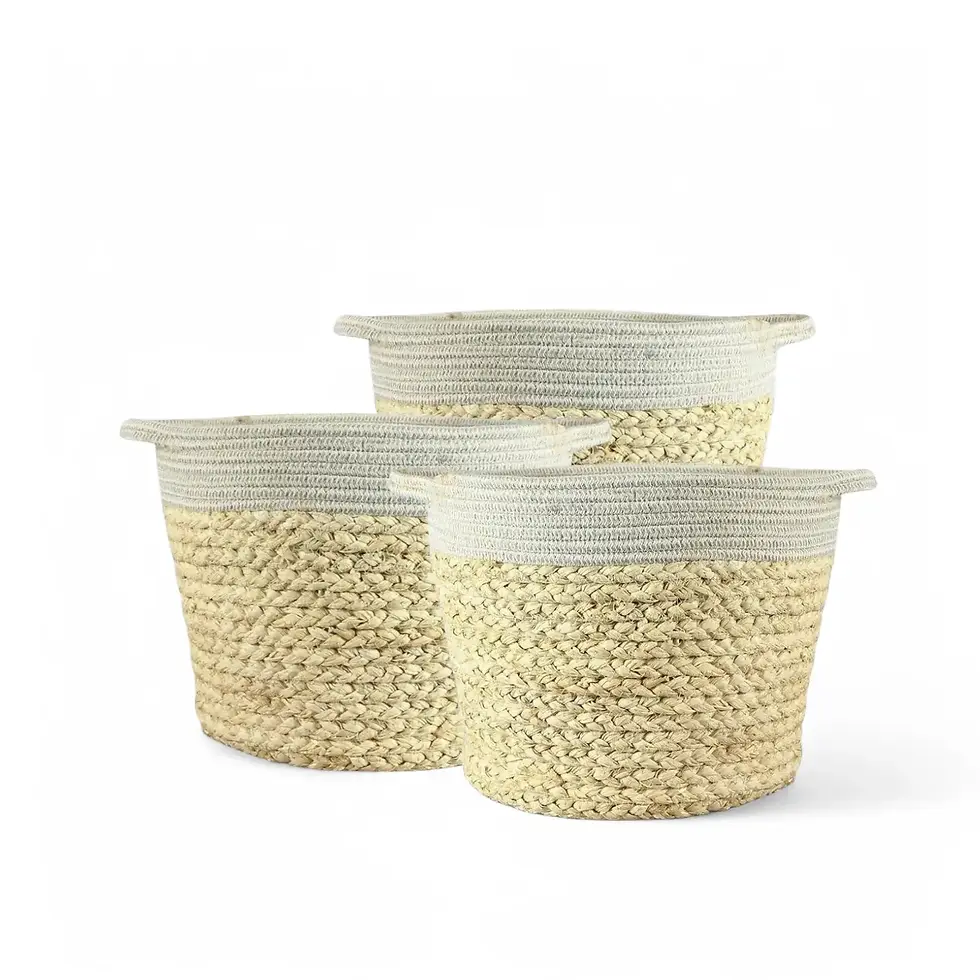Goeppertia (Calathea) rufibarba 'Wavestar' – Information and Plant Care
Goeppertia (Calathea) rufibarba 'Wavestar' is a stunning cultivar celebrated for its distinct foliage and elegant appearance. Originally classified under the Calathea genus, it has been reclassified to Goeppertia, though it still retains its popular association with Calathea among plant enthusiasts. This decorative, clump–forming plant features long, slender leaves with delicately ruffled edges and a soft, velvety texture that adds a touch of sophistication to any space. The leaves exhibit a unique behavior, folding up at night or in low light conditions, revealing their deep burgundy–purple underside. This natural movement, known as nyctinasty, enhances its appeal, making it a captivating addition to indoor plant collections.
Physical Characteristics of Goeppertia (Calathea) rufibarba 'Wavestar'
- Leaf Shape and Texture: Lance–shaped leaves with a rippling effect along the edges, covered in a velvety texture.
- Leaf Color: Deep green upper surface with a striking dark burgundy underside.
- Growth Habit: Forms clumps, reaching up to 1 meter in height and spread, making it ideal for medium to large indoor spaces.
- Behavior: Exhibits nyctinastic movement, folding its leaves at night.
Goeppertia (Calathea) rufibarba 'Wavestar' Plant Care
- Light: Prefers bright, indirect light but can tolerate lower light conditions. Avoid direct sunlight to prevent leaf scorch.
- Water: Keep the soil consistently moist but not waterlogged. Water when the top 2–3 cm of soil feels dry. Use filtered or distilled water to prevent mineral buildup.
- Humidity: Thrives in high humidity levels (above 60%). A humidifier is recommended if indoor air is too dry.
- Temperature: Prefers warm temperatures between 18°C and 24°C. Avoid exposure to cold drafts or sudden fluctuations.
- Soil: Use a well–draining, peat–based mix with perlite or orchid bark for aeration.
- Fertilization: Apply a balanced, water–soluble fertilizer every four weeks during the growing season. Avoid over–fertilization.
- Pruning: Remove yellowing or damaged leaves to maintain the plant's health and appearance.
- Repotting: Repot every two years or when the plant outgrows its pot.
Goeppertia (Calathea) rufibarba 'Wavestar' – Common Issues and Solutions
Browning Leaf Edges
- Caused by low humidity or tap water chemicals. Increase humidity and use filtered or distilled water.
Yellowing Leaves
- Indicates overwatering or poor drainage. Adjust watering schedule and check soil conditions.
Drooping Leaves
- Often due to underwatering or cold drafts. Maintain stable temperatures and ensure proper moisture levels.
Pests
- Susceptible to spider mites, mealybugs, and aphids. Treat with insecticidal soap or neem oil.
Additional Tips
- Placement: Ideal in bright, indirect light, away from direct sun exposure.
- Cleaning: Regularly wipe leaves with a damp cloth to remove dust and enhance light absorption.
- Growth Pattern: Mimicking its native rainforest habitat with warm temperatures and high humidity ensures healthy growth.
Interesting Facts
- Also known as the "Furry Feather Calathea" due to its soft, fuzzy leaf texture.
- Popular in home and office spaces due to its air–purifying properties.
- Its nyctinastic movement (leaf folding at night) is a fascinating natural adaptation.
Etymology
The genus name 'Goeppertia' honors the German botanist Heinrich Göppert, who contributed significantly to botany and paleontology. The species name 'rufibarba' translates to "red beard," referring to the reddish hairs on the petioles.
Frequently Asked Questions about Goeppertia (Calathea) rufibarba 'Wavestar'
Why do the leaves of my Goeppertia (Calathea) rufibarba 'Wavestar' curl?
- Curling leaves indicate low humidity or underwatering. Increase humidity and check watering routine.
How often should I water my Goeppertia (Calathea) rufibarba 'Wavestar'?
- Water when the top 2–3 cm of soil is dry. Avoid overwatering but maintain consistent moisture.
Can I propagate my Goeppertia (Calathea) rufibarba 'Wavestar'?
- Yes, propagation is best done through division during repotting.
Order Goeppertia (Calathea) rufibarba 'Wavestar' Today!
Enhance your indoor space with the lush beauty of Goeppertia (Calathea) rufibarba 'Wavestar'. Buy now and enjoy its striking foliage and easy–care nature!
Goeppertia (Calathea) rufibarba 'Wavestar'
Goeppertia (Calathea) rufibarba 'Wavestar' comes in following sizes:
XL – is approximately 70 cm tall and comes in a ⌀ 19 cm pot.
XL – is approximately 80 cm tall and comes in a ⌀ 27 cm pot.

































